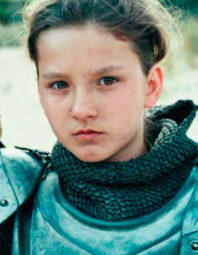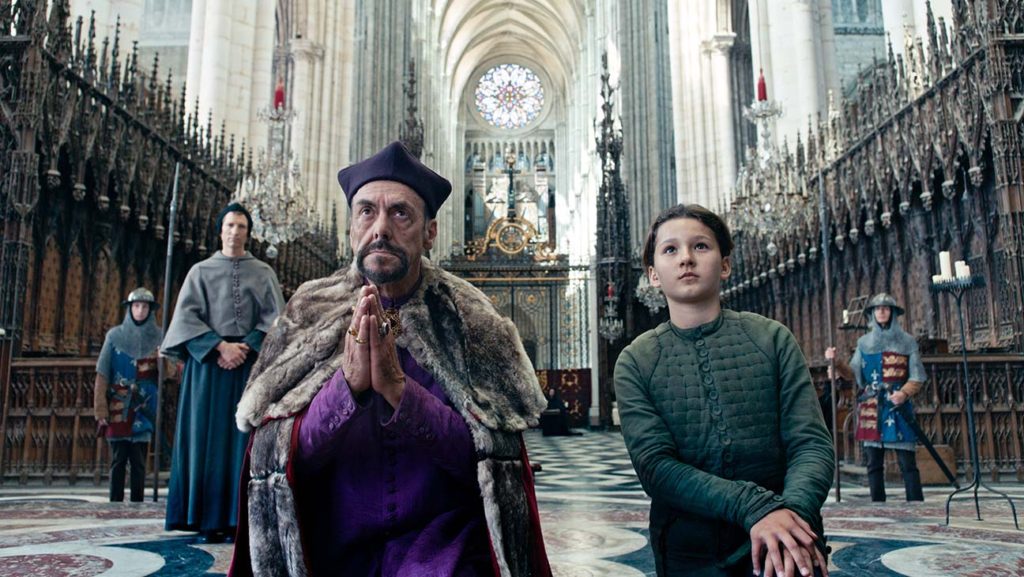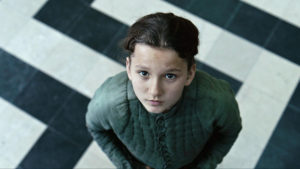
Almost twenty years ago, Bruno Dumont was a key member of the French New Extremity movement. The controversial L’humanité was booed upon winning the Grand Jury Prize in 1999. The incendiary Twentynine Palms was dubbed by Lisa Nesselson of Variety as “Zabriskie Pointless.” Yet, both of these films inspired rapturous praise just as much as they did vitriolic frustration. The graphic sex and violence of his early career perfectly matched him with provocateurs such as Gaspar Noé and Catherine Breillat, and yet, Dumont’s penchant for drippingly slowed down pacing and an emphasis on mundanity meant he acted as something of an outlier to his peers. Whereas a filmmaker like Gaspar inspired dismissiveness from his critics, the pointedly arthouse structures of Dumont’s early career conjured derision and scorn from his.
Like many of his peers (read all but Gaspar Noé) Dumont no longer works in this vein. Instead, he now builds absurdist comedies and mini-serieses? My Dumont is pretty weak; I’ve been meaning to get to much of his earlier work for some time. But his reputation precedes himself, and thus making a two-part absurdity journey about the life of Joan of Arc seems to be a bit of a strange turn. Joan of Arc is the second of these two films, and stars Lise Leplat Prudhomme in the titular role.
How do you picture Joan of Arc? I presume most of the general population thinks strong woman in her late teens, and if you’re a cinephile you can probably conjure that image from Dreyer’s version in your mind’s eye. Dumont has decided to go for an extreme version of age-based absurdism here, which means that Joan is somewhere in between ten and twelve. The dissonance provides most of the absurdity here, particularly when Dumont decides to make choices such as having a five plus minute ballad play atop young Joan looking at clouds for the vibes, or has Joan meet with numerous advisors, who are all very old men with wispy beards. Dissonance is what Dumont is going for here, this much is clear.

It’s less clear as to why however, although the film’s nature as a sequel could provide some clues. Joan of Arc is the second of a two-part series and the follow-up to Jeannette, which I have not seen but sounds wild (supposedly, the score is heavily hard rock based, which means that yes, Bruno Dumont made a young Joan of Arc film with a heavy metal score). Prudhomme is the lead of both films, which suggests that the choice was done for continuity reasons. My guess: Jeanette was really meant to be Jeanette pour Jeanne (I apologize, my French is non-existent), one colossal four-hour legend in the making. That, or Dumont was so enamoured with the youngster that he determined the age-based realism was entirely superfluous.
This is one of the two pieces of general absurdism that seems to permeate through Joan of Arc. The other is the film’s setting, which features very minimal use of sets. This has always been a feature of Dumont’s cinema. L’humanite necessitates provincial settings. Yet, it’s another form of peculiar filmmaking here, and it starts to add up. Remember, this is a film about a ten-year-old playing the elder Joan of Arc’s fall at the hands to zealous official, who are all aged. Add this visual age discrepancy to the fact that many scenes take place in the middle of sand dunes, and the film begins to feel like a funhouse mirror of the classic Joan of Arc tale. It’s not only sand dunes, but occasionally opulent cathedrals. I’ll say this about Joan of Arc, Dumont can really turn a church into a palace of worship.
This absurdism, however, dulls what I believe is the film’s general point. Dumont seems to be aiming to convert this classic myth into one that matches our political moment. In reality, Joan of Arc’s eventual trial and execution was a misogynist sham, perpetrated by men whose pride was wounded at her generalship. But with a such a youthful face at its centre, such pronouncements are subsumed to the general weirdness on screen. Joan of Arc will likely please Dumont’s biggest fans, but will struggle to make headway with those less enamoured with, or aware of, his cinema.
Joan of Arc launches as a part of the Lincoln Center’s Virtual Cinema program on May 22nd before going nationwide to other venues on May 29th.
- Release Date: 5/22/2020

